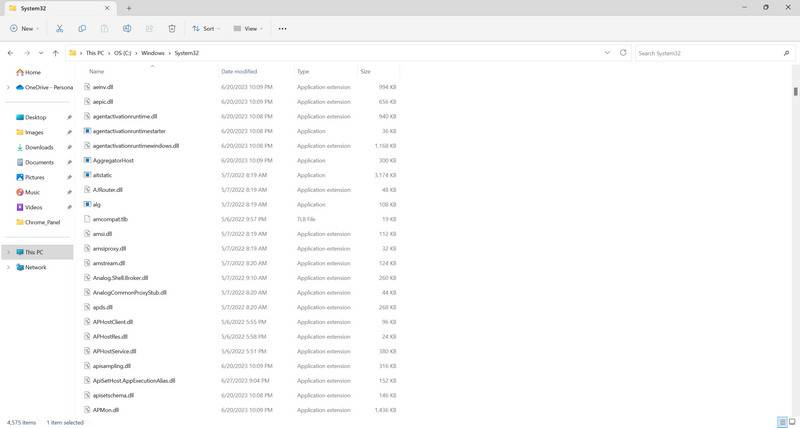The nvcpl.dll file is an essential component of the NVIDIA Control Panel, a software application that allows users to configure and customize their NVIDIA graphics card settings. This dynamic link library (DLL) file is responsible for providing the necessary functions and resources for the control panel to function properly.

This Article Contains:
Understanding the Role of Nvcpl.dll
The nvcpl.dll file is specifically designed for NVIDIA graphics cards and is typically located in the “C:WindowsSystem32” folder. It is loaded into the memory when the NVIDIA Control Panel is launched and is responsible for providing various features and functionalities, including:
- Graphics card settings customization
- Display resolution and refresh rate adjustments
- Multiple monitor configuration
- Performance optimization
- Overclocking options
- Video and image quality adjustments
Without the nvcpl.dll file, the NVIDIA Control Panel would not be able to function properly, and users would lose access to these important graphics card settings and features.
Common Nvcpl.dll Errors
Despite its importance, the nvcpl.dll file can sometimes encounter errors or become corrupted, leading to various issues. Some of the most common nvcpl.dll errors include:
- Missing nvcpl.dll: This error occurs when the nvcpl.dll file is not found in the specified location. It can be caused by accidental deletion, malware infections, or faulty installations.
- Nvcpl.dll not found: Similar to the previous error, this message indicates that the nvcpl.dll file is missing and needs to be restored.
- Nvcpl.dll is corrupt: This error suggests that the nvcpl.dll file has become damaged or corrupted, preventing the NVIDIA Control Panel from functioning correctly.
- Nvcpl.dll access violation: This error occurs when the nvcpl.dll file is unable to access the required resources or perform the necessary functions.
If you encounter any of these errors, it is crucial to address them promptly to ensure the proper functioning of your NVIDIA graphics card and the associated control panel.
How to Fix Nvcpl.dll Errors
When dealing with nvcpl.dll errors, there are several troubleshooting steps you can take to resolve the issue. Follow these methods in order until the problem is resolved:
Method 1: Restart Your Computer
Before attempting any complex solutions, start by restarting your computer. This simple step can often resolve temporary issues and restore the nvcpl.dll file to its normal functioning state.
Method 2: Scan for Viruses and Malware
Viruses and malware can cause significant damage to system files, including the nvcpl.dll file. It is essential to scan your computer for any malicious software using a reliable antivirus program. We recommend using Malwarebytes Free, a trusted and effective antivirus tool.
Method 3: Update Graphics Card Drivers
Outdated or incompatible graphics card drivers can often lead to nvcpl.dll errors. To resolve this, visit the official NVIDIA website and download the latest drivers for your specific graphics card model. Install the drivers and restart your computer to apply the changes.
Method 4: Perform a System File Check
Windows has a built-in tool called System File Checker (SFC) that can scan and repair corrupted system files, including the nvcpl.dll file. To use this tool, follow these steps:
- Open the Command Prompt as an administrator by right-clicking on the Start button and selecting “Command Prompt (Admin).”
- Type the command “sfc /scannow” and press Enter.
- Wait for the scan to complete and follow any on-screen instructions.
- Restart your computer after the process finishes.
Method 5: Reinstall NVIDIA Control Panel
If none of the previous methods work, you can try reinstalling the NVIDIA Control Panel. To do this, follow these steps:
- Open the Control Panel on your computer.
- Navigate to “Programs” or “Programs and Features.”
- Locate the NVIDIA Control Panel in the list of installed programs.
- Right-click on it and select “Uninstall.”
- Follow the on-screen instructions to complete the uninstallation process.
- Visit the official NVIDIA website and download the latest version of the NVIDIA Control Panel.
- Install the downloaded file and restart your computer.
Summary
The nvcpl.dll file is a crucial component of the NVIDIA Control Panel, responsible for providing various graphics card settings and features. However, it can encounter errors or become corrupted, leading to issues such as missing or inaccessible DLL files. To fix these errors, you can try restarting your computer, scanning for viruses and malware using Malwarebytes Free, updating graphics card drivers, performing a system file check, or reinstalling the NVIDIA Control Panel. By following these troubleshooting methods, you can resolve nvcpl.dll errors and restore the proper functioning of your NVIDIA graphics card.










